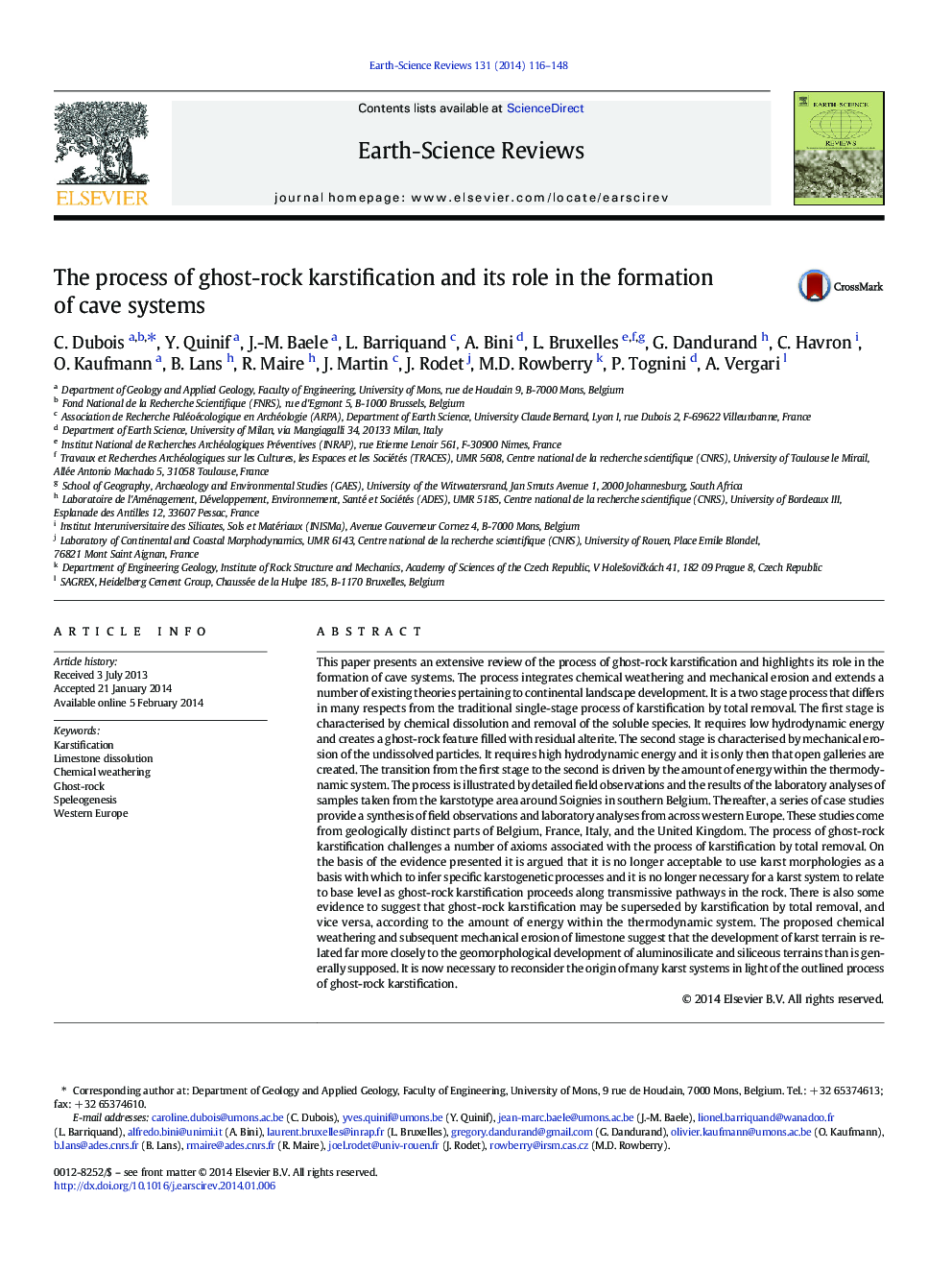| کد مقاله | کد نشریه | سال انتشار | مقاله انگلیسی | نسخه تمام متن |
|---|---|---|---|---|
| 4725755 | 1639971 | 2014 | 33 صفحه PDF | دانلود رایگان |
This paper presents an extensive review of the process of ghost-rock karstification and highlights its role in the formation of cave systems. The process integrates chemical weathering and mechanical erosion and extends a number of existing theories pertaining to continental landscape development. It is a two stage process that differs in many respects from the traditional single-stage process of karstification by total removal. The first stage is characterised by chemical dissolution and removal of the soluble species. It requires low hydrodynamic energy and creates a ghost-rock feature filled with residual alterite. The second stage is characterised by mechanical erosion of the undissolved particles. It requires high hydrodynamic energy and it is only then that open galleries are created. The transition from the first stage to the second is driven by the amount of energy within the thermodynamic system. The process is illustrated by detailed field observations and the results of the laboratory analyses of samples taken from the karstotype area around Soignies in southern Belgium. Thereafter, a series of case studies provide a synthesis of field observations and laboratory analyses from across western Europe. These studies come from geologically distinct parts of Belgium, France, Italy, and the United Kingdom. The process of ghost-rock karstification challenges a number of axioms associated with the process of karstification by total removal. On the basis of the evidence presented it is argued that it is no longer acceptable to use karst morphologies as a basis with which to infer specific karstogenetic processes and it is no longer necessary for a karst system to relate to base level as ghost-rock karstification proceeds along transmissive pathways in the rock. There is also some evidence to suggest that ghost-rock karstification may be superseded by karstification by total removal, and vice versa, according to the amount of energy within the thermodynamic system. The proposed chemical weathering and subsequent mechanical erosion of limestone suggest that the development of karst terrain is related far more closely to the geomorphological development of aluminosilicate and siliceous terrains than is generally supposed. It is now necessary to reconsider the origin of many karst systems in light of the outlined process of ghost-rock karstification.
Journal: Earth-Science Reviews - Volume 131, April 2014, Pages 116–148
